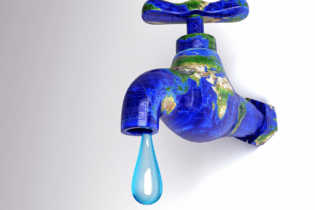The Chemical and Allied Industries Association (CAIA) launched its2012Responsible Care Performance Report. This is the sixth year that this report forms part of CAIA’s business portfolio. The report is aimed at increasing transparency in the implementation and performance of Responsible Care by the chemical industry. South Africa’s chemical industry has made great strides with some of the figures in the 2012 report reflecting an improvement on the three previous years.
The 2012 report reflects new trends in the chemical industry by revealing data such aswater use by source, effluent volumes discharged to various discharge points and volume of water recycled. It continues to reflect quantitative and qualitative data on a range of safety, health and environmental performance indicators aligned with the Responsible Care Management Practice Standard requirements and focuses on waste and water management, product stewardship, energy usage, greenhouse gas and other emissions and incidents relating to the storage and transportation of chemicals. CAIA is the custodian of Responsible Care in South Africa and at the end of 2011 the Association represented 160 companies of which the 55 manufacturers accounted for over 90% of chemical production in South Africa. Participation in the Responsible Care initiative is a requirement of allmembers. In 2011 91% of signatories supplied information for this report. According to Joaquin Schoch, Chairman of the Chemical and Allied Industries’ Association’ board, the latest report reflects a need for acknowledgement of some successes but also the need for continued introspection by the industry. The global Responsible Care Guiding Principles commit companies to continually improve performance so as to avoid harm to people and the environment. Although some of the figures reflect an improvement on 2009 and 2010, there is still a need for CAIA’s continuous attention to safety in all operations irrespective of their level of risk to ensure that the downward trend continues. Schoch states that “although the number of fatalities during 2011 has decreased, there is still improvement needed in the management of health and safety to achieve the target of zero harm.” He also affirmed that the reportable injury rate for employees has remained stable for the last three years in contrast to contractors for whom the rate continues to decline. “Although the reportable injury rate reported here is in line with international trends, it is an area that as an association we intend to give more focused attention in the coming year. The decrease in occupational illness incident rates for employees and contractors reflects an improvement which Schoch hopes will be sustained. He added that the reverse is true for storage incidents where in-house the number has declined, but where the warehousing has been contracted out, the rate has increased. The incident rate for materials transported in house by road, although marginal, increased during 2011 after a notable decrease in 2010. It has been identified that the increase has been where signatories use their own fleet and driver error has once again been identified as a major contributor to such incidents. Interestingly, relatively high rates of incidents were also reported for rail transport in the country. Although transport and storage of chemicals remain significant challenges for the industry, positive strides have been made in many areas, with 72% of signatories reporting that they now operate community advisory committees in which they inform members of the health, safety and environmental risks associated with the storage and handling of their products, while 91% have established a complaints procedure. Some 83% of signatories indicated that they have instituted a waste minimisation programme.The greenhouse gases emissions are reported and are composed of emissions from chemical production only,and exclude those from synthetic fuel production. The emissionsfrom the production of such gases per tonne increased marginally in 2011 as compared to 2009 as a result of elevated levels of carbon dioxide and methane being reported by a company that did not report in 2010. The reporting of air emissions will be expanded in 2013 to align reporting with atmospheric emission licence requirements.
Resource efficiency has continued to improve with members maintaining a level of energy efficiency based on electricity consumption, while continuing to improve water use efficiency. The report shows that water usage per tonne of production has shown a steady decrease since 2008. This is encouraging as Responsible Care signatories are expected to have improvement programmes for better water management through recycling, reuse, reduction in volumes and maintaining equipment. Sites were required for the first time in 2011 to report on the volume of industrial waste water recycling. Responsible Care also means measurable performance and an assessment of compliance with the Responsible Care codes of practice. At the end of 2011, 144 Responsible Care third party verification audits had been completed at 86 sites. These sites had completed their first audit, 47 sites their second audit, 10 sites their third audit and one site their fourth audit. Independent third party assurance of the 2012 Responsible Care Performance Report aligned to internationally recognised standards for assurance took place this year. In conclusion, the Performance Report reveals that Responsible Care continues to drive improvement in health, safety and environmental performance in the chemical industry however in order to ensure improving results, South African chemical companies need to be transparent and remain committed to upholding the objectives of the Responsible Care initiative.






